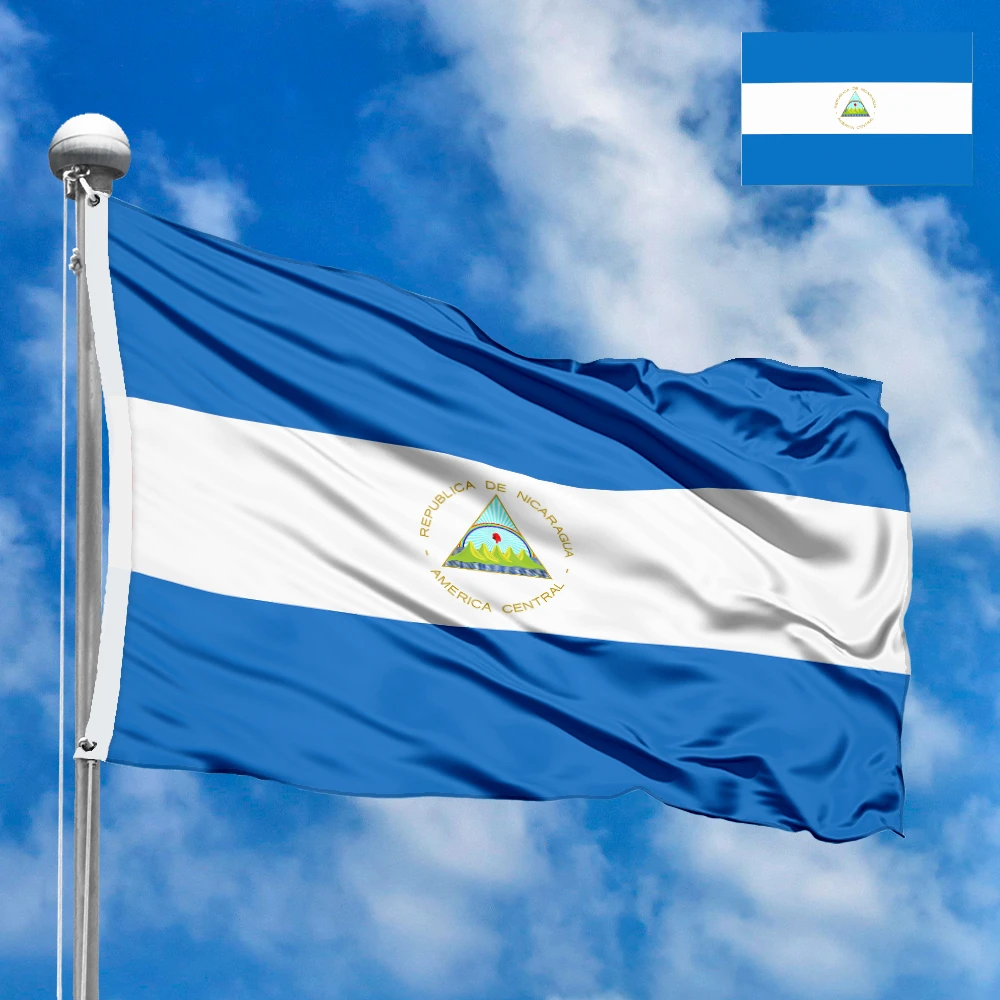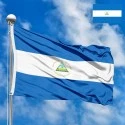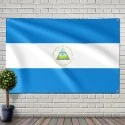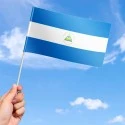The national flag of Nicaragua is a powerful and elegant symbol that tells a profound story of a nation’s history, geography, and aspirations. Its design, rooted in the legacy of the United Provinces of Central America, speaks of unity, peace, and the enduring natural beauty of the country. Adopted on August 27, 1908, the flag's detailed symbolism makes it one of the most expressive national banners in the world, a source of immense pride for the Nicaraguan people.
A Detailed Look at the Flag's Design and Symbolism
The flag of Nicaragua is a horizontal tricolor composed of three equally sized bands. The top and bottom bands are a vibrant cobalt blue, while the central band is white. In the very center of the white stripe, the national coat of arms is prominently displayed.
Each color and symbol on the flag is rich with meaning, providing a visual narrative of the nation's identity:
-
Blue: The two blue bands represent the magnificent Pacific Ocean and the Caribbean Sea that border the country. This color signifies the nation’s geographical location and its profound connection to the sea. It also symbolizes justice, loyalty, and vigilance, reflecting the virtues and principles of the Nicaraguan people. The deep blue evokes a sense of peace and tranquility, mirroring the serene beauty of the nation's waters and sky.
-
White: The central white band represents the land of Nicaragua, the isthmus located between the two great oceans. This color stands for peace, purity, and integrity. It symbolizes the purity of the nation’s ideals and the desire for a peaceful and harmonious coexistence among all Nicaraguans. The white band is a beacon of hope and a reminder of the nation’s commitment to a just and equitable society.
The Intricate Coat of Arms
The national coat of arms is the most symbolic element of the flag. Its design is a masterpiece of heraldry, containing layers of meaning that chronicle the nation's history and hopes.
-
The Equilateral Triangle: The central triangle is a powerful symbol of equality, liberty, and fraternity. It represents the three branches of government—executive, legislative, and judicial—working together in harmony.
-
Five Conical Volcanoes: Inside the triangle, five majestic volcanoes rise from the sea. These represent the five original member states of the United Provinces of Central America: Guatemala, El Salvador, Honduras, Nicaragua, and Costa Rica. They symbolize the shared heritage and the enduring dream of a unified Central American federation. The volcanoes’ active nature also reflects the country's unique geographical landscape and its resilience.
-
The Phrygian Cap: Atop the volcanoes, a bright red Phrygian cap sits on a pole. This is a classic, internationally recognized symbol of liberty and freedom, recalling the ideals of the French Revolution. Its placement signifies the struggle for and attainment of independence from colonial rule.
-
The Rainbow: Above the Phrygian cap, a luminous rainbow arches across the sky. In the biblical tradition, the rainbow symbolizes a promise of peace and hope. Its presence on the coat of arms represents the nation's aspirations for a peaceful future and a new beginning.
-
The Five National Flags: Surrounding the triangle are five national flags of the former Central American federation. These are a bold statement of Nicaragua's continued support for the ideal of Central American unity and a reminder of the nation's historical roots.
-
The Motto: Around the outside of the coat of arms, a golden scroll bears the motto: “REPÚBLICA DE NICARAGUA - AMÉRICA CENTRAL”. This motto proudly proclaims the nation's full name and its geographical and historical identity as part of Central America.
Dimensions and Proportions
The official flag of Nicaragua has a width-to-length ratio of 3:5. The three horizontal bands are of equal height. The coat of arms is perfectly centered on the white band, and its dimensions are proportioned to fit elegantly within the space, ensuring that the entire flag is visually balanced. The precision of these proportions is crucial, as the flag’s design is a matter of national law, requiring faithful and respectful reproduction.
The Genesis and Adoption of the Flag
The history of the Nicaraguan flag is inseparable from the history of Central America itself. The current design is a direct and conscious revival of the flag used by the Federal Republic of Central America from 1823 to 1839. After the federation dissolved, Nicaragua and the other member states adopted their own flags. Over the following decades, Nicaragua experimented with several different designs.
However, a strong sense of Central American identity and the desire for reunification persisted. This led to a decree on September 5, 1908, which officially reinstated the blue-white-blue tricolor, along with the coat of arms. This decision was a powerful statement, signaling Nicaragua's commitment to its historical heritage and its hope for the future unity of the region. The flag has remained in use ever since, with its design solidified over time as a symbol of national sovereignty and Central American solidarity.
Meaning and Significance for Citizens
For the people of Nicaragua, the flag is a sacred and deeply cherished symbol. It represents their nation’s struggle for independence, its unique cultural heritage, and its enduring connection to the Central American region. The flag is a central feature of national life, proudly displayed on government buildings, schools, and private homes, especially during national holidays such as Independence Day on September 15th.
The flag’s symbolism of peace, unity, and liberty resonates deeply with the populace, serving as a reminder of the values that unite them. For Nicaraguans living abroad, the flag is a tangible link to their homeland, a source of community solidarity, and a powerful emblem of their identity. It is a beacon of hope for a stable and prosperous future, a visual reminder that despite past struggles, the nation’s spirit of resilience and its dream of peace remain strong.
Interesting Facts
-
The Nicaraguan flag is virtually identical to the flags of Honduras and El Salvador, as all three nations were once part of the same federation. The key difference lies solely in the design of their central coats of arms.
-
The Phrygian cap on the coat of arms is a potent anti-monarchical symbol, celebrating the overthrow of oppressive colonial rule and the establishment of a free republic.
-
The blue color on the flag is often referred to as "azul cobalto," or cobalt blue, and it has a historical connection to the region's indigo dye trade, which was a major export product during the colonial era.
-
The flag's design has a civilian version, which is the blue-white-blue tricolor without the coat of arms. This simpler version is used by private citizens and in non-official contexts.
-
The volcanoes on the coat of arms are often interpreted as representing the diverse geographical landscape of Nicaragua, a country known for its many active volcanoes and beautiful lakes.
In conclusion, the flag of Nicaragua is a masterpiece of symbolic design. Its colors and intricate coat of arms tell a comprehensive and moving story of a nation's past, present, and future. It is a powerful emblem of national identity, a reminder of its unique place in the world, and a source of profound pride for all Nicaraguans.
In the demonstration images, full-size flags are shown with proportions of 2:3, and hand-held flags with proportions of 1:2.






 Waving flag
Waving flag
 Sizes:
Sizes:
 Round flag
Round flag
 Sizes:
Sizes:
 Rectangular flag 2:3
Rectangular flag 2:3
 Sizes:
Sizes: